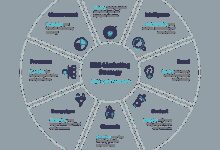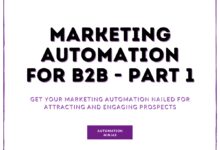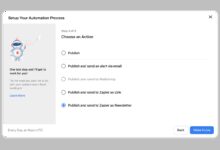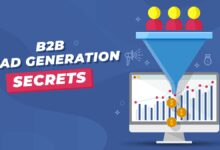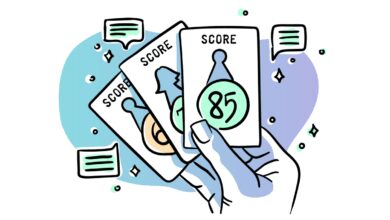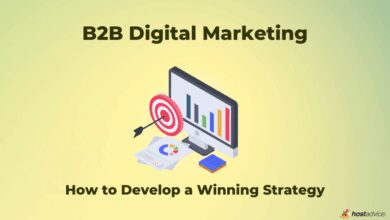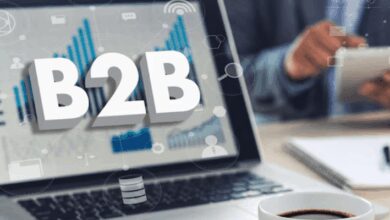Sales Funnel Secrets: 7 Powerful Steps to Skyrocket Conversions
Welcome to the ultimate guide on Sales Funnel mastery. Whether you’re a startup founder or a seasoned marketer, understanding how a Sales Funnel works is the key to turning browsers into buyers and leads into loyal customers.
What Is a Sales Funnel and Why It Matters

A Sales Funnel is not just a marketing buzzword—it’s the backbone of every successful business strategy. Think of it as a roadmap that guides potential customers from their first encounter with your brand to the final purchase decision. Without a well-structured funnel, even the best products can go unnoticed.
The Basic Concept of a Sales Funnel
At its core, a Sales Funnel represents the customer journey in stages. It starts with awareness and ends with a purchase—and possibly even advocacy. The funnel metaphor comes from the idea that many people enter at the top (awareness), but only a fraction make it through to the bottom (conversion).
- Top of the Funnel (TOFU): Where prospects become aware of your brand.
- Middle of the Funnel (MOFU): Where interest and consideration grow.
- Bottom of the Funnel (BOFU): Where decisions are made and purchases happen.
This model helps businesses visualize where prospects are in their buying journey and tailor their messaging accordingly. For example, someone at the top needs educational content, while someone at the bottom might respond better to a limited-time discount.
Why Every Business Needs a Sales Funnel
Imagine running ads, creating content, and driving traffic—only to see little return. That’s what happens without a Sales Funnel. A funnel ensures that every visitor has a clear path forward, reducing friction and increasing conversion rates.
According to HubSpot, companies with a documented Sales Funnel strategy see up to 30% higher conversion rates than those without. It’s not just about making sales—it’s about creating a repeatable, scalable system that grows with your business.
“A Sales Funnel is the difference between hoping for sales and engineering them.” — Marketing Expert, Neil Patel
The 7 Stages of a High-Converting Sales Funnel
While many models simplify the Sales Funnel into three stages, a deeper dive reveals seven critical phases. Mastering each stage allows you to optimize your strategy and maximize ROI. Let’s break them down one by one.
1. Awareness: Capturing Attention
This is where the journey begins. Prospects become aware of your brand, product, or service—often through social media, search engines, or word-of-mouth. The goal here isn’t to sell but to inform and engage.
Effective tactics include SEO-optimized blog posts, YouTube videos, and paid ads targeting specific pain points. For instance, a blog titled “5 Signs You Need a Better CRM” can attract business owners struggling with customer management.
Tools like Google Analytics help track traffic sources and user behavior, allowing you to refine your awareness strategy over time.
2. Interest: Building Engagement
Once someone knows you exist, the next step is to spark interest. This is where you provide value—free guides, webinars, or email newsletters that address their specific needs.
- Offer lead magnets like checklists or templates.
- Use retargeting ads to stay top-of-mind.
- Engage through social media comments and DMs.
Email marketing platforms like Mailchimp or ConvertKit are excellent for nurturing interest with automated sequences.
3. Consideration: Presenting Your Solution
Now the prospect is evaluating options. They might be comparing your product to competitors or reading reviews. This is your chance to stand out.
Create comparison charts, case studies, and demo videos. Highlight unique selling propositions (USPs) such as faster delivery, better customer support, or a money-back guarantee.
A well-crafted landing page with testimonials and trust badges can significantly boost credibility at this stage.
4. Intent: Encouraging Commitment
At this point, the prospect shows buying intent—maybe they’ve added an item to their cart or requested a quote. But hesitation can still kill the deal.
Use urgency and scarcity tactics: “Only 3 left in stock!” or “Offer ends in 2 hours.” Exit-intent popups offering a discount can recover up to 15% of abandoning visitors, according to Optimizely.
Live chat support can also answer last-minute questions, reducing friction and boosting confidence.
5. Evaluation: Overcoming Final Objections
Even with strong intent, some prospects stall. They might worry about cost, compatibility, or long-term value. This is where personalized follow-ups shine.
Send targeted emails addressing common concerns. For example, if selling software, include a case study showing ROI within 30 days. Video messages from your sales team can add a human touch.
Tools like Crisp or Intercom enable real-time conversations that build trust and accelerate decisions.
6. Purchase: Closing the Deal
This is the conversion moment—the sale is made. But the experience doesn’t end at checkout. A smooth, secure, and fast transaction process is crucial.
Offer multiple payment options (credit card, PayPal, Apple Pay) and ensure your checkout page is mobile-friendly. According to Shopify, 70% of mobile users abandon carts if the process is too complicated.
Post-purchase emails confirming the order and setting delivery expectations help reduce anxiety and build trust.
7. Loyalty & Advocacy: Turning Customers into Fans
The funnel doesn’t end at purchase. In fact, the most profitable stage often comes after. Loyal customers buy more, refer others, and provide valuable feedback.
- Launch a referral program with incentives.
- Send thank-you notes or surprise gifts.
- Invite them to exclusive communities or events.
Amazon’s success isn’t just due to low prices—it’s their obsession with post-purchase experience, from easy returns to personalized recommendations.
“It costs 5x more to acquire a new customer than to retain an existing one.” — Harvard Business Review
Types of Sales Funnels That Actually Work
Not all Sales Funnels are created equal. The right type depends on your product, audience, and goals. Let’s explore the most effective models used by top marketers today.
Lead Generation Funnel
This funnel is perfect for service-based businesses or B2B companies. The goal is to collect contact information in exchange for value—like a free consultation or downloadable guide.
Example: A financial advisor offers a “Retirement Planning Checklist” in exchange for an email address. Once captured, the lead enters an email sequence that builds trust and sets up a sales call.
Platforms like Unbounce make it easy to create high-converting landing pages for lead capture.
Product Launch Funnel
Used by entrepreneurs and digital creators, this funnel builds hype before releasing a new product. It typically starts with a pre-launch email sequence, followed by early-bird offers and countdown timers.
Example: A course creator uses a 5-day challenge to engage subscribers, then opens enrollment for a limited time. The urgency drives immediate action.
This model works because it combines education, scarcity, and social proof—three powerful psychological triggers.
Webinar Funnel
Webinars are one of the highest-converting Sales Funnels, especially for high-ticket items. A free, value-packed webinar educates the audience and ends with a special offer.
According to GoToWebinar, conversion rates for webinar funnels average between 20-35%, far above typical online ads.
Key elements: a compelling title, expert presenter, live Q&A, and a time-sensitive bonus for attendees who buy.
E-Commerce Sales Funnel
This is the classic online shopping journey: browse, add to cart, checkout, confirm. But top brands optimize every step.
- Use product videos and 360-degree images.
- Display real-time inventory levels.
- Offer free shipping thresholds.
Brands like Zappos excel by removing friction—free returns, 24/7 support, and fast delivery—making the purchase decision effortless.
How to Build a Sales Funnel from Scratch
Building a Sales Funnel doesn’t require a huge budget or a tech team. With the right tools and strategy, you can create one in days. Here’s a step-by-step guide.
Step 1: Define Your Target Audience
You can’t build a funnel without knowing who you’re building it for. Create buyer personas based on demographics, pain points, and buying behavior.
Ask: Who are they? What keeps them up at night? Where do they spend time online? Tools like SurveyMonkey or Facebook Audience Insights can help gather data.
The more specific your audience, the more personalized and effective your funnel will be.
Step 2: Map Out the Customer Journey
Sketch the path from awareness to purchase. Identify key touchpoints: where they’ll first see you, what content they’ll engage with, and how they’ll convert.
Example: A fitness coach might map this journey: Instagram ad → Free workout guide → Email series → 1-on-1 consultation → Program purchase.
Use flowchart tools like Lucidchart to visualize the funnel and spot gaps.
Step 3: Choose the Right Tools
You don’t need everything at once, but these tools are essential:
- Landing page builder: Carrd or Leadpages
- Email marketing: Constant Contact or Klaviyo
- CRM: Zoho CRM or Salesforce
- Analytics: Hotjar for heatmaps and session recordings
Start simple and scale as you grow.
Common Sales Funnel Mistakes to Avoid
Even smart marketers make mistakes. Here are the most common pitfalls that can sabotage your Sales Funnel—and how to fix them.
Mistake 1: No Clear Call-to-Action (CTA)
If visitors don’t know what to do next, they’ll leave. Every page should have a single, compelling CTA—whether it’s “Download Now,” “Book a Call,” or “Start Free Trial.”
Use contrasting colors and action-oriented language. A/B test different CTAs to see what converts best.
Mistake 2: Ignoring Mobile Users
Over 60% of web traffic comes from mobile devices. If your funnel isn’t mobile-optimized, you’re losing sales.
Test every page on different devices. Ensure buttons are easy to tap, text is readable, and forms are short. Google’s PageSpeed Insights can help identify mobile issues.
Mistake 3: Overcomplicating the Process
More steps = more drop-offs. A 3-step checkout converts better than a 7-step one. Keep forms short, remove distractions, and focus on the user’s goal.
Amazon’s 1-Click ordering is a masterclass in simplicity—why make it harder?
“Simplicity is the ultimate sophistication.” — Leonardo da Vinci
How to Optimize Your Sales Funnel for Maximum Results
Building a funnel is just the beginning. The real magic happens through continuous optimization. Here’s how to make your funnel perform better over time.
Use A/B Testing to Improve Conversions
Never guess what works—test it. A/B testing lets you compare two versions of a page, email, or ad to see which performs better.
Test headlines, images, button colors, and even email subject lines. Tools like Optimizely or Google Optimize make this easy.
Example: Changing a CTA from “Learn More” to “Get My Free Guide” increased conversions by 32% for one client.
Leverage Analytics to Track Performance
Data is your best friend. Use Google Analytics to track key metrics:
- Bounce rate: Are people leaving immediately?
- Conversion rate: What percentage becomes customers?
- Funnel drop-off points: Where are people abandoning the process?
Set up goals and funnels in Google Analytics to visualize the customer journey and identify bottlenecks.
Personalize the Experience
Generic messages get ignored. Personalization increases relevance and trust. Use the visitor’s name in emails, recommend products based on browsing history, or show location-based offers.
According to Marketing Dive, personalized emails deliver 6x higher transaction rates.
Sales Funnel vs. Marketing Funnel: What’s the Difference?
These terms are often used interchangeably, but they’re not the same. Understanding the distinction can improve your strategy.
Marketing Funnel: Focused on Awareness and Interest
The Marketing Funnel covers the early stages—awareness, interest, and consideration. Its goal is to generate leads and build brand recognition.
Channels include SEO, content marketing, social media, and paid ads. Success is measured by traffic, engagement, and lead volume.
Sales Funnel: Focused on Conversion and Revenue
The Sales Funnel picks up where marketing leaves off. It’s about closing deals, managing negotiations, and driving revenue.
It includes sales calls, proposals, contracts, and follow-ups. Metrics include conversion rate, average deal size, and sales cycle length.
In reality, both funnels should work together. Marketing feeds qualified leads into the Sales Funnel, creating a seamless customer journey.
“Marketing makes the promise. Sales delivers the result.” — Anonymous
Real-World Sales Funnel Examples That Crush It
Nothing beats learning from real success stories. Let’s look at three brands that nailed their Sales Funnel.
Example 1: ClickFunnels’ Own Funnel
The company behind funnel software uses its own product to generate millions. Their funnel starts with a free book offer (“DotCom Secrets”) in exchange for an email.
Then, a 5-part email sequence delivers value and introduces their software. The final email offers a free trial with a compelling demo video.
This simple, high-value approach has helped them acquire over 100,000 customers.
Example 2: Dropbox’s Referral Funnel
Dropbox grew from 100,000 to 4 million users in 15 months using a viral referral funnel. Users got extra storage for inviting friends—simple, valuable, and scalable.
The CTA was clear: “Get more space. Invite friends.” The incentive was irresistible for a storage-hungry audience.
Example 3: Tesla’s Direct-to-Consumer Funnel
Tesla bypasses dealerships and sells directly. Their funnel: website → customize car → online order → home delivery.
No pressure salespeople, no haggling. The experience is seamless, transparent, and aligned with their brand of innovation.
What is a Sales Funnel?
A Sales Funnel is a step-by-step process that guides potential customers from first awareness to final purchase, helping businesses convert leads into paying customers efficiently.
How long does it take to build a Sales Funnel?
You can set up a basic Sales Funnel in as little as 1-3 days using tools like ClickFunnels or Leadpages. However, optimizing it for high conversions can take weeks or months of testing.
Can a small business benefit from a Sales Funnel?
Absolutely. In fact, small businesses often see the biggest ROI from Sales Funnels because they help automate marketing and sales, saving time and increasing revenue.
What’s the most important stage of a Sales Funnel?
All stages matter, but the awareness stage is critical—it determines how many people enter your funnel. Without traffic, even the best funnel won’t convert.
How do I measure Sales Funnel success?
Track key metrics like conversion rate, customer acquisition cost (CAC), average order value (AOV), and lifetime value (LTV). Use tools like Google Analytics and CRM software to monitor performance.
Mastering the Sales Funnel is no longer optional—it’s essential for any business that wants to grow in today’s competitive market. From creating awareness to nurturing loyalty, each stage plays a vital role in turning strangers into customers and customers into advocates. By understanding the psychology behind buying decisions, avoiding common mistakes, and continuously optimizing your funnel, you can build a predictable, scalable system for long-term success. Whether you’re selling a $10 product or a $10,000 service, the principles remain the same: provide value, reduce friction, and guide your audience with clarity and purpose.
Further Reading:
